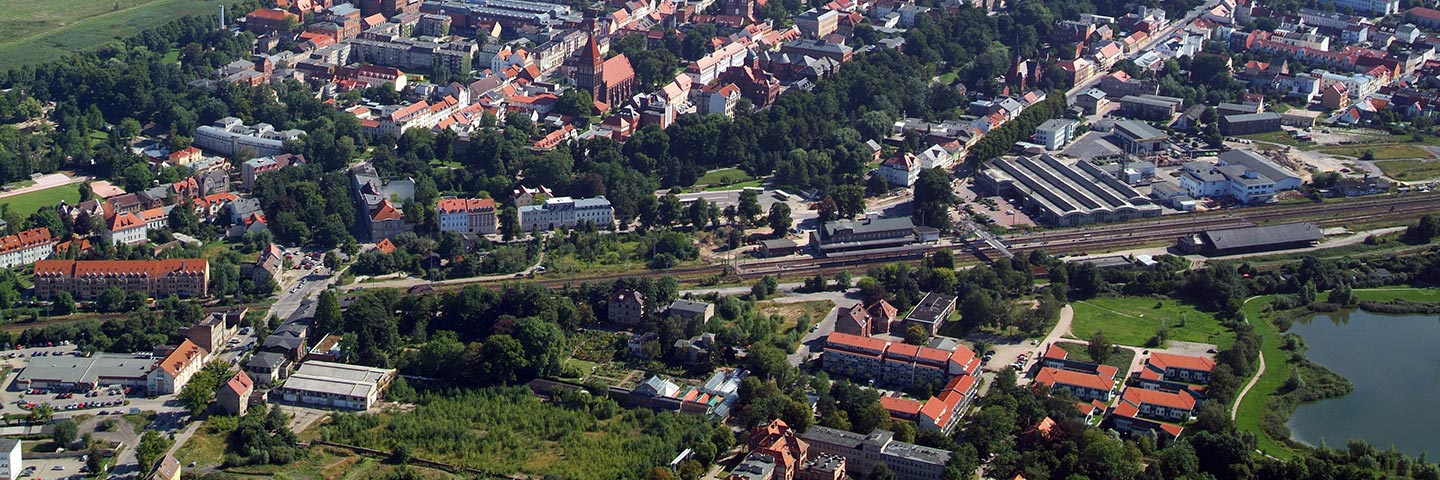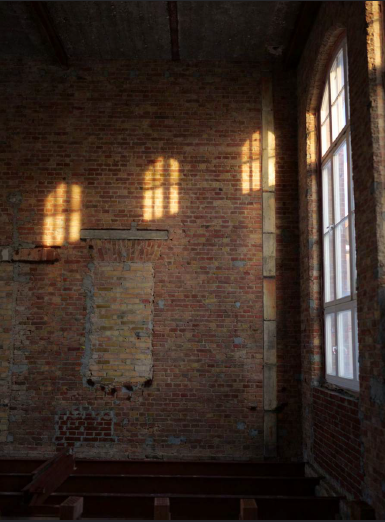News
2024
by Dorothee Scheuch
Paludiculture & 3D, Map 2.0 and more

Newsletter – new issue
11/12/24 Will there will be cattails in printer cartridges in the future, what are thematic maps the new Global Peatland Hotspot Atlas and what will the WETSCAPES 2.0 project be examining over the next ten years – find out in the just published current issue of our Paludiculture newsletter.
Further topics include the compendium on the paludiculture potential of Ukraine and details & deadlines for the international paludiculture conference "Renewable Resources from Wet and Rewetted Peatlands" from September 23rd to 26th, 2025 in Greifswald, jointly organized by the Greifswald Moor Centrum and the Thünen Institute. Also in this newsletter: reports about EIN:FLUSS:RAUM:MOOR, the joint exhibition by MONAS-Collective and Greifswald Moor Centrum inspired by Caspar David Friedrich, about a soil workshop within the PaludiNetz and about the conference "MENSCHEN.MACHEN.MOORE."
We hope you enjoy reading and are happy to receive feedback on the newsletter by email to communication@greifswaldmoor.de.
by Dorothee Scheuch
New: Wetscapes 2.0

10 mio project funded by Deutsche Forschungs Gesellschaft
04/12/24 ‘WETSCAPES2.0: novel ecosystems in rewetted fen landscapes’ will investigate the functioning and complex ecological, biogeochemical and hydrological processes in rewetted fens. The funding from the German Research Foundation was acquired by the Universities of Greifswald and Rostock together with the Leibniz Institute of Freshwater Ecology and Inland Fisheries (IGB Berlin), the Helmholtz Centre Potsdam German Research Centre for Geosciences (GFZ), the Ludwig-Maximilians-Universität München (LMU), the Max Planck Institute for Biogeochemistry Jena (MPI-BGC) and the Humboldt-Universität zu Berlin (HU).
The background: peatlands have been drained for centuries, which has led to significant greenhouse gas emissions, nutrient discharge into watercourses and neighbouring ecosystems as well as massive losses of biodiversity. Rewetting programmes across Europe are now intended to reverse these negative effects. However, this is not restoring the original peatlands, but creating new types of ecosystems, the functioning of which is still only partially understood.
The research network aims to better understand the functioning and complex ecological, biogeochemical and hydrological processes in rewetted fens. It will investigate the effects of rewetting peatlands in space and time at landscape level and beyond. In the long term, concrete contributions to the management of these areas and to sustainable utilisation through paludiculture will be developed.
WETSCAPES 2.0 strengthens cutting-edge research in Mecklenburg-Western Pomerania and also makes a decisive contribution to addressing global challenges such as climate change and biodiversity loss and advancing nature-based solutions locally. Knowledge transfer and the communication of research topics for greater social acceptance will take place in close cooperation with the Greifswald Mire Centre.
The DFG's Collaborative Research Centres (SFB) are long-term research institutions at universities in which scientists work together as part of an interdisciplinary research programme. Innovative, challenging, complex and long-term projects can be realised in the Collaborative Research Centres by coordinating and concentrating people and resources at the applicant universities. They serve to develop institutional priorities and structures.
More information can be found in the media information of the University of Greifswald.
by NK
Peatlands & Brazil

New briefing paper and perspective for "peatland breakthrough" at COP30
22/11/24 As UNFCCC COP29 is ending in Baku, Azerbaijan, preparations are gathering pace for the next COP – which will take place in Brazil. Scientists are already now pointing out the little-noticed but huge climate potential of the peatlands of Brazil. The country’s most carbon dense ecosystem is nearly unprotected and tremendously threatened by large scale agriculture and deforestation, a new briefing paper by the Greifswald Mire Centre and partners finds.
In Brazil there are 17,000 km² covered with peat and another 209,000 km² with peat occurring in patches. These peatlands are distributed in Amazonia, the Cerrado savanna, the coastal areas plus in mountainous areas and highlands. Clearly, the Brazilian Amazonia, e.g. the Rio Negro basin and along river valleys, is Brazil's peatland hotspot.
The United Nations Environmental Agency (UNEP) estimates their carbon stock in peatlands is 39 Gt. It also assumes 3,540 km² of organic soils currently to be under land use, causing greenhouse gas (GHG) emissions of at least 18 Mt CO2-e. Scientists suspect this number to be an understimation. Brazil's peatlands also serve as water buffer which is severly needed for the dry season and prevention of wildfires.
However, Brazil does not report carbon emissions from land use on organic soils to the UNFCCC. Greenhouse gas emissions resulting from e.g. peatland drainage, drought, peat fires, from agriculture and urban encroachment remain unaccounted for. Also, wetland protection in general is currently excluded from the most important Brazilian nature conservation law, the federal Brazilian Native Vegetation Protection (LPVN) Law (12,651, May 2012). Thus, activities with negative impacts such as cattle grazing and extraction of water for domestic purposes remain allowed in wetlands.
"Brazil’s peatlands are virtually not recognized nor protected, and seriously threatened by industrial scale agriculture, like soy and cattle production, deforestation and climate change. We urgently need to better understand and protect peatlands in Brazil.” says Felix Beer, one of the authors of the new briefing paper.
Since peatlands are spread over incredibly vast areas and peatland science is a rather young discipline in Brazil, the extent of peatlands there is subject to large uncertainties. There is a tremendous need to increase monitoring efforts, legal protection, conservation measures and to close knowledge gaps etc.. Alexandre Christofaro Silva, Professor of Forest Engineering at the Federal University of Jequitinhonha and Mucuri valley, demands: “The conservation of Brazilian peatlands is essential not only for traditional people and regional communities, but to humanity. At COP30 even in Brazil we need to have them on the agenda, and fight to stop their anthropization (fire, drainage, pasture) as we fight to stop cutting Amazonian rain forests.”
In respect to next year's climate summit, Cinthia Soto Golcher, responsible for Climate Change Advocacy at Wetlands International, states: “To reach the Paris Agreement goals on mitigation and adaptation, drained peatlands must be restored and rewetted. This cannot be achieved by only a few actors, but needs the mobilization of national and international stakeholders and resources. Hence, we view COP 30 in Brazil as a historic opportunity -and responsibility- for the international community to advance a significant and transformative chapter for peatlands in which they are seriously considered as part of the path towards a resilient 1,5C planet by 2050.”
by NK
Global Peatland Hotspot Atlas

Launch & call to action at COP29
21/11/24 Brandnew, incredibly informative and well designed: the new Global Peatland Hotspot Atlas launched in a peatland side event Side Event at the climate summit COP29 in Baku today! It presents the most up-to-date data on world’s peatlands in a Global Peatland Map 2.0 visualizing global threats and opportunities for peatlands.
That’s new:
- regional maps on all six continents
- thematic maps on biodiversity, permafrost, water supply and more
- maps on degradation, greenhouse gas emissions, peatland use, environmental risks etc
This Global Peatland Hotspot Atlas is a call to action to place peatlands at the heart of the global environmental agenda! It enables decision makers to scope potential regions for conservation, restoration, and sustainable management, since time to act is now.
The Atlas was issued by UNEP as a product of the Global Peatlands Initiative with maps of the Greifswald Mire Centre.
by NK
4th RRR-conference in Sept 2025

First info on programme, speakers, excursions...
20/11/24 Jointly organised by Greifswald Mire Centre and Thünen Institute the 4th RRR Conference "Renewable Resources from Wet and Rewetted Peatlands" will take place in Greifswald from 23rd – 26th September 2025.
Rewetting peatlands and sustainable land-use concepts are key to tackling climate change. To advance peatland solutions the 4th RRR Conference aims to converge science and practice and invites scientists, landowners and land users, as well as people from administration, business, arts and design, policy and conservation, and other interested people.
Join us to take a look and celebrate 25 years of paludiculture advancements and to dive into topics like governance, biodiversity, biomass utilisation, and photovoltaics on rewetted peatlands Participate in workshops, poster sessions and exhibitions. An entire afternoon is dedicated to highlight practical experiences. Thus, contractors, manufacturers, and other stakeholders, will have the opportunitiy to showcase their products in an exhibition and to present their projects in pitches on a stage
In addition, excursions will lead to a Typha farming site in the Peene valley, a coastal flood peatland restoration with grazing (Karrendorfer Wiesen) and to buffalo grazing in coastal peatlands (Darss peninsula) - all three sites are located in Mecklenburg-Western Pommerania. An excursion on Sphagnum paludiculture is destined to Hankhauser Moor in Lower Saxony.
Registration will be possible from beginning of 2025 und abstracts may submitted until 31.st May 2025. You may find all information in detail on the RRR-conference website.
If you would like to contribute by offering a workshop or showcasing your project at the exhibition you my contact info@rrr2025.com.
by Helena Plochberger
Peatland sound & light

Vernissage EIN:FLUSS:RAUM:MOOR
30/10/24 EIN:FLUSS:RAUM:MOOR, the joint exhibition by MONAS-Collective and Greifswald Mire Centre, can be seen from 31st October -7th December 2025 in Spielhalle Kunst at Greifswald. It reflects peatlands in sound and light artwork inspired by Caspar David Friedrich and his fascination with landscape. In the painter's anniversary year, this exhibition invites visitors to experience beauty and significance of peatland landscapes in an unusual way - in a combination of climate data, audio recordings, light projections and exhibits.
The artists captured peatland sound using soil microphones at Kieshofer Moor and Karrendorfer Wiesen, both close to Greifswald. Together with data from greenhouse gas measurements by GMC scientists, these are converted into light pulses. The visitors themselves influence this system, as the installation also measures CO2 values in the room in real time.
The fusion of sound, image and sculpture can be experienced free of charge from Wednesday to Sunday, 11 am to 5 pm.
There are several side events, all free of charge, accompanying the exhibition:
- 9th November at 2 pm: a free guided tour through the exhibition
- 19th November at 5 pm: How to communicate peatland and climate protection? Students of landscape ecology at the University of Greifswald present ideas in unusual formats. Music, pantomime, theatre - come around an let yourself be surprised at Spielhalle Kunst.
- 23rd November at 1 pm: a finissage-peatland walk combined with a final guided tour through the exhibition by the Caspar David Friedrich Anniversary Office
by Helena Plochberger
Applause with reeds

Festive environmental award ceremony
27/10/24 She works in the lecture hall, in the field and in parliamentary hearings - peatland researcher Franziska Tanneberger is the kind of scientist one would wish for. Engineer Thomas Seidel has developed the “Swiss army knife of electromobility” to combat Germany's “range anxiety”. Secretary General Alexander Bonde and Chairman of the Board of Trustees Kai Niebert told the press before the award ceremony that choosing the winner of this year's German Environmental Award was not difficult.
Tanneberger and Speidel aim to say goodbye to “burning” - in very different ways. The entrepreneur at ADS-TEC Energy is advancing electromobility with fast charging stations. The scientist at the University of Greifswald and co-director of the Greifswald Mire Center wants to stop oxidation by draining peat soils and shows the opportunities for natural climate protection through wet peatlands.
“We should not be content with regularly failing to achieve our climate targets,” says Tanneberger. She appreciates the award because it raises awareness for solutions and because it is a great recognition for the entire peatland team in Greifswald. Its representatives waved reeds for applause.
Federal President Frank-Walter Steinmeier also emphasized solutions in his speech: charging stations as self-evident as telephone booths used to be, he imagined. They were everywhere - except in the peatlands, Steinmeier said. In view of the climate crisis, its image is changing from sinister to beneficial. Signals, said Franziska Tanneberger, are sent to us by the peatlands even without a telephone box in them. She would like to use her share of the prize money to fund further research and implementation on climate and biodiversity protection in peatlands and their sustainable use.
About the German Environmental Award:
With the German Environmental Award, the German Federal Environmental Foundation (DBU) annually honors the achievements of people who make an exemplary contribution to the protection and preservation of the environment. The prize is endowed with a total of 500,000 euros and is presented by the Federal President. Here are the media reports from tagesschau and others.
by NK
Paludiculture in Ukraine

New compendium by UNDP with expertise from Greifswald
14/10/24 Northern Ukraine became the focal point of an ambitious project aimed at peatland restoration and climate protection. The Michael Succow Foundation (MSF), partner in Greifswald Mire Centre, jointed the United Nations Development Programme in Ukraine (UNDP) to provide expert support on paludiculture for the project “Promoting sustainable livestock management and ecosystem conservation in Northern Ukraine” funded by the Global Environment Facility (GEF) and the FOLUR platform (The Food Systems, Land Use and Restoration Impact Programme).
The project aims to transform 3 million hectares of land into a model for ecologically conscious agriculture, with a focus on reducing greenhouse gas emissions, enhancing soil fertility, and protecting endangered species. It embraces paludiculture, a sustainable form of wetland farming designed to reduce carbon emissions by rewetting and cultivating peatlands. Wendelin Wichtmann (Michael Succow Sitftung) was commissioned to assess its feasibility in Ukraine, with Olga Denyshchyk securing alignment with Ukrainian conditions. Their work included conducting a comprehensive desk study and producing a compendium of findings, which was made available in Ukrainian.
The compendium is intended for farmers, representatives of local communities, the scientific community, and civil society. Its purpose is to provide a scientific basis for the implementation of internationally recognized environmentally-oriented agricultural practices, particularly on wet peatlands, adapted to the unique conditions of Ukraine. The compendium also provides recommendations for the application of paludiculture practices on restored peatlands, combining environmentally-oriented solutions with economic efficiency.This is the first collection in Ukraine that contains scientific information about paludiculture a sustainable land-use method, already being implemented in European Union member states.
by NK
Invitation of the MoKKa project

Closing conference at 7th Nov at Schwerin
114/10/24 Germany’s peatlands are key to achieving our climate goals, but are we doing enough? As the final event of the MoKKa project approaches, the pressing question remains: How can we mobilize more stakeholders for effective peatland climate protection? On November 7th in Schwerin, this conference will bring together experts and decision-makers to explore innovative solutions and forge new paths forward. Currently, only 2,000 hectares of peatland are rewetted annually in Germany—an effort that falls far short of the 50,000 hectares per year required to meet climate targets. This gap highlights the need for immediate and extensive action. We must accelerate permitting processes, expand training programs for professionals, and engage the public in supporting peatland restoration as a vital tool for climate mitigation.The conference will focus on the following topics:
- Accelerating planning and permitting processes, improving land availability
• Building support structures
• Promoting peat formation – when and how?
• Climate education on peatland climate protection with the Peatland Suitcase (Moorkoffer)
The program offers ample space for exchange and discussions on solutions and past experiences. Among the speakers are Nathalie Niederdrenk (BMUV), Prof. Sabine Schlacke (University of Greifswald), Almut Mrotzek (Mooragentur MV), and Tom Kirschey (Competence Center for Natural Climate Protection). The conference, jointly organized by the Michael Succow Foundation, the University of Greifswald, and the Nature Conservation Foundation Deutsche Ostsee, addresses professionals, multipliers, and decision-makers in administration, business, education, and politics, as well as all those interested in peatland climate protection. Register by October 25th, 2024.
The MoKKa Project is fundedthe Federal Ministry for Economic Affairs and Climate Action (BMWK) is supporting the partners at the Greifswald Moor Centrum (University of Greifswald and Michael Succow Foundation) as well as the Nature Conservation Foundation Deutsche Ostsee (Ostseestiftung) from 2022 to 2024 through the National Climate Protection Initiative (NKI). The goal is to build capacity for the implementation of peatland climate protection in Mecklenburg-Western Pomerania and across Germany. More information can be found at www.mokka-projekt.de.
by Dorothee Scheuch
Climate-neutral building materials

An opportunity for peatlands?
8/10/24 Agora Agrar and Greifswald Mire Centre invite you to the expert discussion ‘Climate-neutral building materials - an opportunity for wet peatland use’ on 14th November 2024, 14:30 - 20:00 at the dbb Forum Berlin Friedrichstraße.
On the way to a climate-neutral economy, the demand for biomass as a substitute for fossil raw materials - for example for building materials - is increasing. Biomass from the cultivation of wet peatlands - known as paludiculture biomass - can meet part of this demand and open up economic prospects for farmers on rewetted peatland sites. This requires new value chains, as the cultivation and utilisation of paludiculture biomass is still in its infancy. This requires a suitable political framework. Not only agricultural and environmental policy, but also climate and economic policy are of great importance here. The event will address both the potential of paludiculture biomass for the construction industry and the political scope for action that can enable and promote new value chains for the material utilisation of paludiculture biomass in the construction sector.
Registration is now possible until 31 October 2024 on this website: www.agora-agrar.de/aktuelles/klimaneutrale-baustoffe.
by Dorothee Scheuch
Peatlands & climate & Baltic coast

Restoration on 850 hectares by 2034
5/10/24 Twelve diked coastal polders between Rostock and the Polish Baltic Sea will be restored over the next ten years as part of the ‘Peatland Climate Protection on the Baltic Sea Coast’ project. One aim of the ANK model project is to significantly reduce the ongoing release of climate-damaging gases on these 850 hectares, up to 24,000 tonnes of CO2 per year. Another aim is to establish climate-friendly land use. Last Friday, Federal Environment Minister Steffi Lemke visited Bresewitz (district of Vorpommern-Rügen) to see the successfully renaturalised peatland areas on the coast. She handed over the grant notification for 27.8 million euros to the project managers Georg Nikelski (Baltic Sea Foundation), Professor Maren Voß (Leibniz Institute for Baltic Sea Research Warnemünde/Marine Cycles) and Professor Gerald Jurasinski (University of Greifswald/Greifswald Mire Centre). The project is funded by the Federal Agency for Nature Conservation, the funds are provided by the Federal Ministry for the Environment (BMUV) in the Natural Climate Protection Action Programme (ANK). The state of Mecklenburg-Western Pomerania is contributing 2.3 million euros to the project.
Image: People from left: Prof Maren Voß, Georg Nikelski, Federal Environment Minister Steffi Lemke, Dr Balázs Baranyai (Baltic Sea Foundation), Minister Dr Till Backhaus, Prof Gerald Jurasinski (Photo: Andreas Krone.)
by Dorothee Scheuch
Paludiculture & Biodiv, Cardboard, Theatre

New newsletter
1/10/24 Paludiculture in combination with biodiversity, cardboard and theatre - these are just some of the topics covered in the current issue of our newsletter: A new information paper summarises experiences from Germany on how biodiversity develops on paludiculture areas. Sustainability manager Karla Jabben explains how and why OTTO GmbH has developed a shipping box partly made from paludiculture biomass. There is also an invitation in the newsletter: On the Day of German Unity on 3 October, the Greifswald Mire Centre and the University of Greifswald will be holding a Theatre & Talk in Schwerin to take a look at the history and future of peatland management - entertaining, free of charge and open to all.
We hope you enjoy reading the newsletter and would be happy to receive feedback on it by e-mail to communication@greifswaldmoor.de.
by Dorothee Scheuch
New information paper on paludiculture and biodiversity

Everything important in brief
26/09/24 Compared to agriculture on drained peatland, paludiculture promotes biodiversity, as the new information paper of Eberswalde University of Sustainable Development, Peatland Science Centre and Greifswald Mire Centre summarizes. It’s clear: typical peatland and peatland-specific species have no habitat on drained peatland soils. If and which they have on cultivated rewetted areas, is meanwhile shown by studies in several areas. For example, the number of Red List species of birds has doubled within four years on a cattail cultivation area in Mecklenburg-Western Pomerania. On a peat moss cultivation area in Lower Saxony, the number of dragonfly species typical to bogs almost equals that of near-natural bogs in the area after nine years of observation.
After rewetting, wetness-loving and rare species are found where previously widespread species of moist or dry conditions dominated. The intensity of use, mowing and harvesting time have different effects on these species. The mowing of areas creates a more species-rich vegetation due to less litter, more light incidence and leaching. In winter, however, this causes a lack of host plants and winter refuges for some animal species. The information paper addresses both negative and positive aspects, as well as possible conflicts with nature conservation and accompanying measures that can promote biodiversity.
by Dorothee Scheuch
GMC with theatre and expert talk in Schwerin
German Unity Day - not without peatlands

GMC with theatre and expert talk in Schwerin
25/09/24 Mecklenburg-Vorpommern is hosting the multi-day celebrations for German Unity Day this year. An opportunity to present the state's moors and research with a look into the past and perspectives for the future - packed into a varied program. Entertaining, open to the public and free of charge on Thursday, October 3 from 15:15-16:45 on the Zukunftsforum stage in the inner courtyard of Schwerin Castle:
15:15 “Moor muss nass, oder was” - A play by the 9th grade of the Martinschule Greifswald: the moor researcher Prof. Dr. Hans Joosten from Greifswald manages to travel into the GDR past to the year 1958 with the help of Mephisto. There, thousands of young people are busy draining the Friedländer Große Wiese, a vast peatland in Mecklenburg-Western Pomerania. Why are they doing this, will the professor succeed in convincing the young people to stop their work and what plans is Mephisto actually pursuing?
15:45 Back in the present, the students meet the bog professor in real life. They ask him questions: Why would Joosten have preferred to stay in the past and why did the enthusiasm of the past turn into the disaster of today?
16:00 What potential does paludiculture offer for agriculture and the economy? What needs to happen politically for more paludiculture and how can research contribute to this? Dr. Franziska Tanneberger (GMC Director and winner of the German Environmental Award), Dr. Till Backhaus (Minister for the Environment and Agriculture MV), Tobias Gruber (Division Manager Sustainability OTTO Group) and farmer Robert Wellen will discuss these issues. The event will be moderated by Jan Meßerschmidt, Head of University Communications at the University of Greifswald.
by NK
GMC auf IPCS in Weihenstephan

Overview of our contributions
10/09/2024 From 18th-21st September, the Weihenstephan-Triesdorf University of Applied Sciences is hosting the International Peatland Science Conference (iPSC). Naturally, numerous GMC employees will be taking part with presentations and posters. Here is an overview of them:
Thursday 19th September
14:45 More than a paper tiger: Paludiculture pilot projects in paper production - Clemens Kleinspehn
15:00 Paludiciulture can support biodiversity conservation in rewetted fen peatlands - Hanna R. Martens
Friday 20th September
8:30 Opening with environmental Art ‘MoorReaktor’ - MONAS collective in cooperation with GMC
13:20 Keynote People make Peatlands - practical projects and political processes towards peatland rewetting - Prof. Dr Gerald Jurasinski:
11:15 The relevance of drainage ditches as breeding habitat for mosquitoes in Northern Germany - Felix Sauer
15:30 Water Management for Spaghnum and Typha Paludiculture - Matthias Krebs
15:30 Spaghnum paludiculture sites as surrogate habitats for bog species of many species groups - results of long-term investigation in Northwest Germany - Dr Greta Gaudig
16:00 Bright spots in peatland conservation and restoration Renske Vroom
16:00 Putting Paludiculture into practice - six years of large scale Typha cultivation in Northeast Germany - Josephine Neubert
16:15 Peat formation potential of Typha spp. on a Paludiculture pilot site - Meline Brendel
16:30 PEATMAP: Prototype model for the study of peatland and swob distribution, ecology and carbon dynamics in the Iberian Peninsula lanscaoe mosaic - Miguel Geraldes
16:30 Paludiculture and biomass quality of cattail on a 10 ha Paludiculture Pilot site in Northeast Germany - Nora Köhn
Dr Franziska Tanneberger, GMC co-director and winner of the German Environmental Award 2024, is a member of the Scientific Committee. The conference will take place at the Weihenstephan-Triesdorf University of Applied Sciences (HSWT) campus in Freising. Further information in the detailed programme.
by Dorothee Scheuch
Biogenic polymers, biochar, peat moss harvesting

New paludiculture newsletter
25/07/2024 Biogenic polymers and biochar - both can be related to paludiculture and are the subject of the latest issue of our newsletter. A look at the final report from MOORuse reveals that natural fibres from paludiculture are suitable as biogenic polymers in terms of sustainability, for example for injection moulding or 3D printing. In England, researchers are investigating whether biochar on paludiculture areas increases their carbon storage. We present the interactive online version of the Global Peatland Map and a legal report on rewetting in Germany and its obstacles. And of particular interest to land users: information on current funding for machinery and equipment for paludiculture!
We hope you enjoy reading the newsletter and would be pleased to receive feedback on it by e-mail to communication@greifswaldmoor.de.
by Dorothee Scheuch
Invitation: Conclusion "TyphaSubstrat"

50% less peat is possible
22/07/2024 The aim of the three-year TyphaSubstrat project - harvesting and utilising cattail as an alternative substrate material for press pot soil in vegetable growing - was to develop a peat-reduced press pot soil with up to 50% less peat. At the final event on 5 September in Darmstadt, the project participants will present their results. These show: 50% peat reduction in pressed potting soil is possible! Presentations and dialogue in the morning at the Forschungsring e.V. in Darmstadt will be complemented by a tour of the practical tests in a vegetable nursery and a young plant farm near Mannheim. Detailed information on registration and the programme can be found here.
TyphaSubstrat focuses on cattail in a mixture with other peat substitute components such as sphagnum, green waste compost and wood for press pots, on which lettuce and vegetables are grown commercially. In addition, special technology for harvesting cattail was further developed in the project, and cattail raw material was analysed with regard to substrate properties, including pesticides and herbicides. By reducing the use of peat and utilising paludiculture biomass, TyphaSubstrat makes a dual contribution to the transformation towards climate-neutral use of wet peatlands (paludiculture) and demonstrates possibilities for sustainable substrate production. The proven suitability of cattail biomass as an alternative substrate offers the industry a new renewable raw material that can be produced regionally. A step towards a long-term secure and climate-friendly raw material supply and a contribution to peatland protection. TyphaSubstrat is funded by the German Federal Ministry of Food and Agriculture via the Agency for Renewable Resources (Fachagentur für nachwachsende Rohstoffe e.V.).
by Dorothee Scheuch
Global Peatland Map 2.0!

Now online
18/07/2024 The GMC's Global Peatland Map is now available online and interactive! It comprises eleven pages and covers a wide range of topics, such as the extent of peatlands per country, greenhouse gas emissions, biodiversity hotspots, peatlands in protected areas and sources of fire. A series of story maps “Peatlands in the Continents” will complement the Global Peatland Map 2.0. for a detailed look at regions offering key facts on peatland distribution, degradation and options for action. Visually intuitive, easy to navigate and beautifully designed, a first story map on Asian Peatlands can already be tried out.
The web version of the Global Peatland Map is based on data from the Global Peatlands Assessment from 2022, which summarized the best available scientific data to provide an overview of the state of peatlands worldwide. As a partner in the Global Peatlands Initiative, the GMC's map specialists created the online version in close cooperation with the World Environment Situation Room of the United Nations Environment Programme (UNEP).
by Dorothee Scheuch
Climate, water, biodiversity in peatlands and floodplains

Statement of the Leopoldina
27/06/2024 Climate, water, biodiversity - how this is connected in peatlands and floodplains, what condition it is in and how it can be improved - is now summarized in Climate - Water Balance - Biodiversity: For an integrative use of moors and floodplains, the statement published today by the German National Academy of Sciences Leopoldina. "Nowhere in Central Europe is biodiversity as high as in these wetlands," says Leopoldina member Prof. Dr. Klement Tockner, Director General of the Senckenberg Gesellschaft für Naturforschung. Near-natural peatlands and floodplains are also essential for preventing flood disasters and reducing CO2 emissions. The statement with supplementary digital dossier emphasizes the need to rewet peatlands and restore floodplains. Both are already enshrined as climate and biodiversity goals, for the EU for example in the Nature Restoration Law recently adopted by the EU Environment Council and worldwide in the UN Convention on Biological Diversity. The latter provides for the protection and restoration of at least 30% of the world's land, freshwater and marine areas by 2030. The statement now presents options for action to achieve national and international commitments in climate, water and biodiversity protection and still be able to use these areas economically. This includes protecting intact peatlands, switching to paludiculture, rewarding ecosystem services and including the measures in CO2 emissions trading. Twelve scientists from the fields of ecology, biology, hydrology, sociology, agricultural engineering, environmental economics and law were involved - including Dr. Franziska Tanneberger and Prof. Jürgen Kreyling, two scientists from the Greifswald Mire Centre.
by Dorothee Scheuch
What's the problem?

New legal opinion reveals obstacles
26/06/2024 With their vegetation and soils, terrestrial ecosystems such as intact peatlands, floodplains and forests are valuable carbon reservoirs and sinks. However, rapid restoration often fails due to legal obstacles. The new report "Legal issues in connection with the rewetting of peatlands" in the GMC publication series provides a comprehensive analysis and shows possible solutions for the implementation of peatland climate protection. The rewetting of peatlands and their sustainable wet use, paludiculture, play a major role in natural climate protection. There are particular obstacles in terms of land availability, planning and approval. The German government's Natural Climate Protection Action Program aims to protect and strengthen these endangered ecosystems - and to understand and remove the obstacles that stand in the way of restoring these valuable areas. The new legal opinion by Prof. Dr. Sabine Schlacke and Prof. Dr. Michael Sauthoff makes an important contribution to this. It was drawn up as part of the MoKKa - Moorland Climate Protection through Capacity Building project, in which the Succow Foundation, the University of Greifswald and the Baltic Sea Foundation are working together. The results of the report will be presented today at the "Fachforum: Natürlichen Klimaschutz beschleunigen - Rechtliche Rahmenbedingungen verbessern", jointly organized with the Deutsche Bundesstiftung Umwelt in Berlin. The possibilities for implementing the legal policy recommendations will also be discussed.
by Dorothee Scheuch
Peatland research in Brazil and photovoltaics

New Paludiculture newsletter out now
30/05/2024 Huge peatlands, lots to do in peatland research - in the latest issue of our newsletter, Felix Beer takes us to the peatlands of the Brazilian Cerrado. The recently founded PaludiAllianz project also has a lot to do. It aims to ensure rapidly growing demand for paludiculture biomass -now! And - lots of interest in photovoltaics on peatlands! The MoorPV project is taking a close look at the win-win-win for the energy industry, climate protection and biodiversity. Also in the newsletter: Save the date for RRR2025, new MoorAgentur founded, new funding for building with renewable materials.
Not only do we hope you enjoy reading the newsletter, but we would also be happy to receive feedback on the newsletter by emailing communication@greifswaldmoor.de.
by NK
Save the Date for RRR2025

On Global Peatlands Day
02/06/2024 In celebration of this year’s World Peatlands Day, the Greifswald Mire Centre warmly invites you to save the date for the 4th international RRR conference on the Renewable Resources from Wet and Rewetted Peatlands. Taking place in Greifswald, Germany from September 23rd to 26th, 2025, the conference will unite experts from diverse disciplines to share insights and experiences and address pressing questions within the field of paludiculture.
In 2024, "paludiculture" marked its 25th anniversary since being called into life, with significant advancements made in practical knowledge regarding rewetting, cultivation, processing, marketing, policy development and awareness-building, but large-scale implementation is still low. This conference aims to unite stakeholders involved in the utilisation of rewetted peatlands, welcoming scientists, landowners and users, administrators, manufactors, artists, designers and policymakers. By fostering cross-sector networks, sharing experiences and knowledge, we seek to bridge the gap between science and practice and together discuss and shape the future of paludiculture.
Through a diverse program including lectures, poster presentations, excursions, and a range of interactive events, we endeavour to facilitate meaningful dialogue and collaboration. Stay tuned for further details, including abstract submission and registration information, which will soon be available on our website. We look forward to your participation! For conference updates please visit our website rrr2025.com, or follow @greifswaldmoor on the GMC’s social media channels.
by Dorothee Scheuch
Afforesting drained peatlands?
No viable option, new GMC paper shows
13/05/2024 Although the EU Nature Restoration Law was wiped off the EU’s trilogue-agenda in March, scientists took a close look on what was suggested as a restoration measure during the negotiations: active afforestation of degraded peatlands. Their conclusion: evidence for long term overall climate benefits is lacking. Their recommendation: the NRL should foster true natural ecosystems wherever possible, particularly where those are demonstrably carbon capture systems.
For the article “Active afforestation of drained peatlands is not a viable option under the EU Nature Restoration Law” peatland professor Gerald Jurasinski with colleagues of Greifswald Mire Centre and other European peatland scientists assembled facts of several studies. In most cases CO2 release from peat soil degradation will likely exceed carbon sequestration in the forest biomass, as the paper pubished in Ambio Journal of Environment and Society states. It is pointing out the severe challenges to measure greenhouse gas fluxes in peatland forests both with airtight chambers and eddy covariance technique. Another point of critique: the studies quoted in favor of afforestation do not describe the situation after afforestation of agricultural fields or cutover peatlands.
by Dorothee Scheuch
No peatlands in Bellevue's Garden?
Yes - at the Environment Week 2024
13/05/2024 There are no peatlands in the garden of Bellevue Palace? That's right, but there will be during the Environment Week on June 4-5.
We from the Greifswald Mire Center, together with the Agency for Renewable Resources, will be demonstrating how important peatland protection is for climate protection - with cattail in the wall and peat moss on the plate - at the Environment Week of Federal President Frank-Walter Steinmeier and the German Federal Environmental Foundation (DBU).
At our stand no. 35, interested visitors can find out how peat moss is propagated in a bioreactor or what a landscape with paludiculture looks like in a model. As a souvenir, you can take home some cress in a home-made press pot - filled with substrate made from paludiculture biomass, of course!
Registration for the event is open until May 15.
But what is the Environment Week? Not quite for a week, but for two days, Federal President Frank-Walter Steinmeier and the DBU invite environmental and nature conservation organizations and other exhibitors to the park of the official residence to showcase current and imaginative ideas and projects for more environmental, climate and species protection. The show is intended to inspire all participants for a sustainable future. The park will be transformed into a tent city. This year, around 190 exhibitors and more than 70 specialist forums on health, society, the economy, nature conservation, etc. will be taking place.
The Week of the Environment was launched in 2002 by the then Federal President Johannes Rau. Since then, it has been organized together with the Osnabrück-based German Federal Environmental Foundation. This year it is in its seventh edition.
by Dorothee Scheuch
Launch of PaludiAllianz

Companies for paludiculture
It was end of April, but the beginning for the Alliance of Pioneers: 14 large commercial enterprises from the paper, packaging, construction, insulation and wood-based material industries declared at a kick-off event in Berlin that they would test renewable, regional raw materials from wet peatlands in their production and integrate them wherever possible. According to the joint press release issued by the Michael Otto Environmental Foundation and the Succow Foundation, partners in the Greifswald Mire Centre, which launched the PaludiAllianz in the toMOORow initiative, the aim is to achieve rapidly growing demand for paludiculture in various sectors of the economy. Well-known companies are now among the founding members:
Interest in future paludiculture products in the construction sector has been expressed by prefabricated house manufacturer Bau-Fritz GmbH & Co. KG, the construction group STRABAG SE and OTTO WULFF Bauunternehmung GmbH and Sto SE & Co. KGaA. The companies toom Baumarkt and OBI Group Holding SE & Co. KGaA also consider biomass from paludiculture in the horticulture segment as a supplier of substrates. The retail and service company Otto (GmbH & Co. KG), LEIPA Group GmbH, the WEPA Foundation and, in the area of recyclables management, PreZero Stiftung & Co. KG with OutNature GmbH aim to make paper and packaging more sustainable by adding of paludiculture biomass. Procter & Gamble Service GmbH is involved in the area of consumer goods for household and cosmetics, as is Tengelmann Twenty-One KG with KiK Textilien and Non-Food in the retail sector.
“Development of scalable value chains with paludiculture biomass from rewetted peatlands in Germany in practical cooperation with economic players” (PaludiAllianz) is the detailed title of the project, for which Cem Özdemir, Federal Minister of Agriculture and Nutrition, handed over a funding decision of almost 1.8 million euros over the next three years at Kulturbrauerei in Berlin. As rewetting also offers effective natural climate protection, Federal Environment Minister Steffi Lemke was also a guest speaker at the event.
by Dorothee Scheuch
New GMC publication
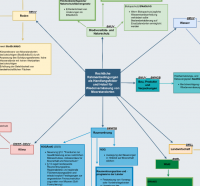
on peatland, law & rewetting
22/04/2024 "Legal framework conditions for the rewetting and use of peatlands - a mapping of fields of action and levers" is the full-length title of the new GMC publication. Above all, it provides a graphic overview of nine fields of action as well as the respective applicable legal bases and political strategies for rewetting and adapted peatland use in the Federal Republic of Germany. The focus is on the federal level. There are text boxes with suggestions as to which political levers could improve or accelerate peatland climate protection- The relevant ministries are conveniently assigned. The GMC publication is intended as a basis for further and more detailed legal analyses.
by NK
Methane and rewetting
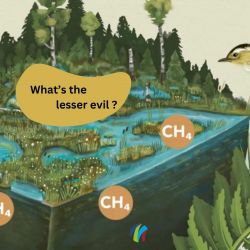
Explained in new film
17/04/2024 This film is troubleshooting this peatland question: What’s the lesser evil - drained peatlands emitting carbon dioxide (CO2) or rewetting causing methane (CH4) emissions? Find answers on:
by NK
Bioreactor, anniversary, investments & more ...
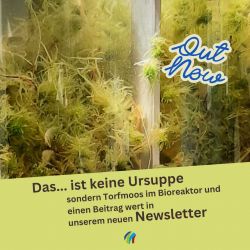
Newsletter: new issue
10/04/2024 These topics don't go together? Yes, they do, because hteir all topics of our new issue of the Paludiculture Newsletter. Read about
- what peat mosses have to do in a bioreactor,
- what the provisional failure of the law to save the European Council now means for peatland,
- how the 25-year-old concept of paludiculture is not bogged down at all, but should be celebrated today, and
- why investing in peatlands is worth it
Not only do we hope you enjoy reading this newsletter, we would also be delighted to receive feedback on it. Simply write an e-mail to communication@greifswaldmoor.de.
by Dorothee Scheuch
MoorMaidens at Mapathon
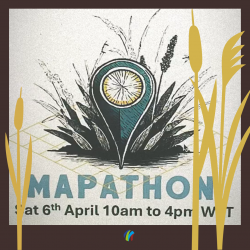
Open data mining for better peatland maps in Germany and worldwide
A map of all peatlands and wetlands in Europe is to be created as part of the Mapathon at the University of Galway, Ireland, on 6th April. The MoorMaidens, the team of the Greifswald Mire Centre, is determined to engage in quite some sound mapping acitivity the coming Saturday.
The event is intended to draw public attention to the peatlands, but also to the opportunities offered by open data. The wetlands will be considered from the following perspectives: Biodiversity, Climate Protection, Energy, Community & Culture, Environmental Quality - Water, Soil & Air, Land Use & Agriculture, Research & Applied Sciences, Economy.
Here's how it works: Each team selects a specific geographical area that it would like to map, usually a European country. With the help of open data, mire areas and the categories assigned to them are visualised.
The Mapathon will be streamed live on Zoom and YouTube throughout the day, and a technical support team will be available to answer questions via Google Chat. A full list of discovered open data on peatlands will be distributed to all participants after the event.
Interested parties are encouraged to participate online or on site. The main tool used will be QGIS. There will be an introduction and technical support if required.
A mapathon is a coordinated mapping event where the public is invited to make map improvements in their neighbourhood to increase coverage. The knowledge and work of many is brought together to form a whole from which everyone benefits.
The European Peatlands & Policies Open Data Mapathon 2024 starts on 6th April at 11 a.m. CET, and there are also great prizes for the best teams: The winners will receive 1200 EUR.
by Dorothee Scheuch
Biodiversity - how to save it?
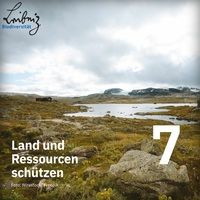
10 must knows from the world of research
Good news: There are only six years left to achieve the biodiversity targets, but we can do a lot to effectively conserve biodiversity at local, national and European level, in society and in politics! 64 scientists have compiled their ideas in the new report of the Biodiversity Research Network, coordinated by the Leibniz Association. Peatlands are mentioned right at the top (the Greifswald Mire Centre and the University of Greifswald also contributed to this), as their conservation helps to combat both the climate crisis and species loss.
In fact, only a small part of global biodiversity is understood so far. The report therefore recommends focusing on the functioning of entire ecosystems rather than individual species. Environmental measures can thus become more sustainable. The "10 must-knows from biodiversity research" provide facts for a National Biodiversity Strategy 2030, which is currently being developed. This will enable the German government to implement the 23 global biodiversity targets agreed by the member states of the United Nations at the World Conference on Nature in December 2022.
by Dorothee Scheuch
25 years of paludiculture
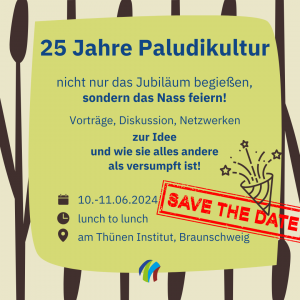
#savethedate
07/03/2024 The word paludiculture was born 25 years ago. A "simple" word was needed for an entire concept: rewetting drained moorland to stop the release of greenhouse gases and ... to continue using it in a new, sustainable form of agriculture. It was made up of two Latin words: palus for swamp and cultura for cultivation. A lot has happened since then: Pioneers have tried out paludiculture, research projects have looked at various aspects from sowing to certificates, politicians are looking into it and companies are beginning to discover paludiculture as a market. This development will be celebrated at the anniversary celebration on June 10-11 (lunch to lunch) in Braunschweig. The PaludiZentrale project, jointly organized by the Thünen Institute, the University of Greifswald and the Succow Foundation, invites you to lectures, excursions and intensive networking. The aim is to create a large Paludi network from paludiculture initiatives and projects in Germany to exchange know-how and experience.
by NK
Salon: Caspar and peatlands
Landscape painted, but also recognized?
10/02/2024 "Meadows near Greifswald" is one of the most famous works by the painter Caspar David Friedrich. It shows Greifswald and will even be on display in his home town in this year of the romantic painter' 250th anniversary, only ... it does not show meadows. The view up to the town's silhouette falls on drained peatlands, then as today. In the salon series of the Caspar David Friedrich peatland professor Hans Joosten will talk about this discrepancy, about Adelbert von Chamisso's "Untersuchung eines Torfmoors bei Greifswald", published almost at the same time (1824), and about the relationship between man and nature or landscape. The salon evening on February 22 at 7 p.m. in Ellernholzstr. 1-3 is free of charge, but registration is required.
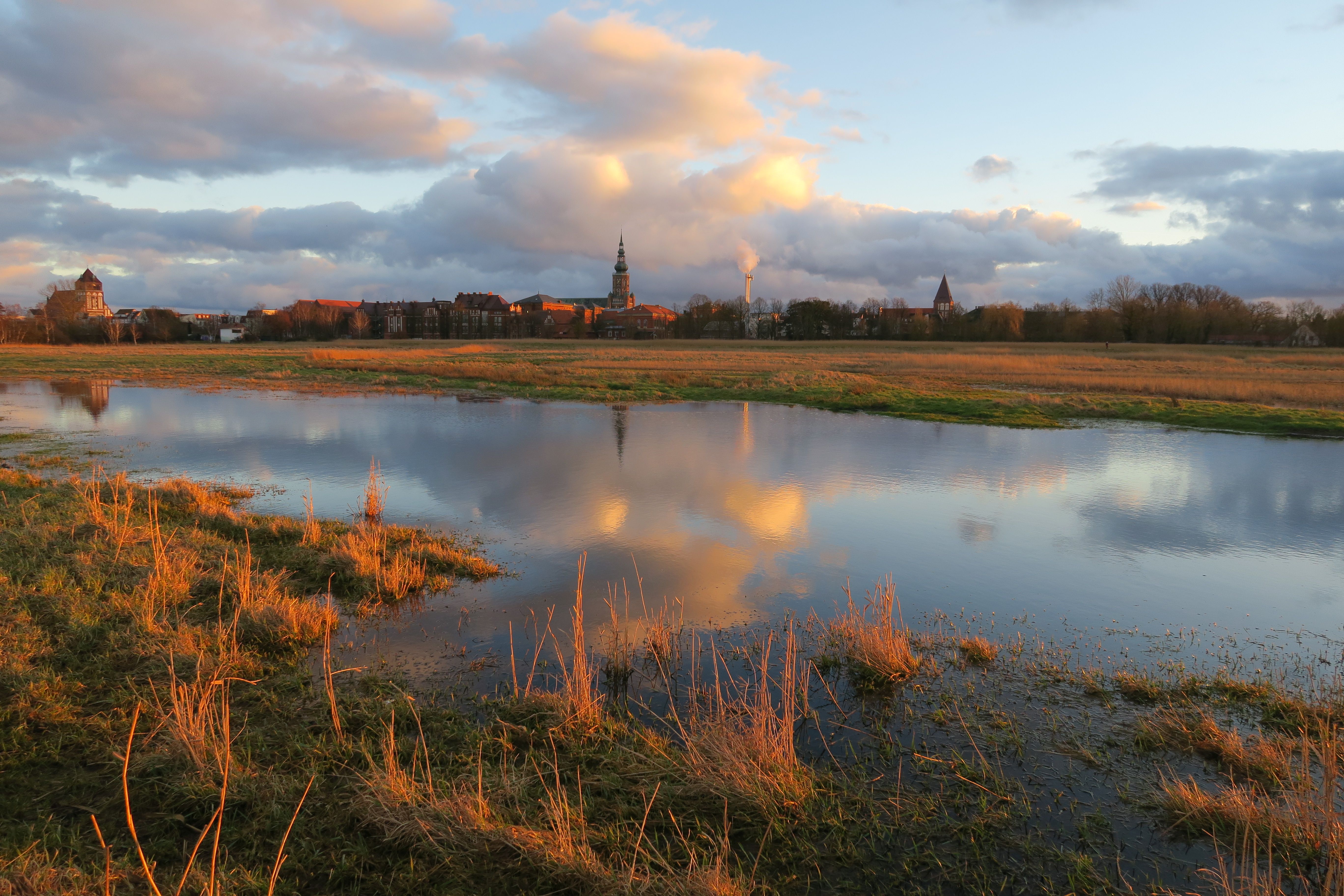
by Dorothee Scheuch
PaludiZentrale
Accompanying wet peatland use on the way to market
24/01/2024 The PaludiZentrale project bundles four recently launched model and demonstration projects (MuDs) for peatland protection and the utilization of biomass from rewetted areas for more economic paludiculture potential. Jointly managed by Thünen Institute Braunschweig and University of Greifswald, it coordinates and ensures uniform scientific data collection and knowledge exchange. It evaluates results of all aprticipating projects and develops suggestions for political and economic framework conditions as well as recommendations for action for implementation in practice. It also takes care of the transfer of knowledge. The researchers will accompany the new model and demonstration projects in raising the water level at least close to the surface on peatland areas and growing paludicultures (Latin palus: swamp, cultura: agriculture). Another task is to push the utilisation of peatland biomass towards practical use. The projects “Management and biomass utilization of wet fens in Brandenburg (WetNetBB)”, “Living Lab Teufelsmoor – climate and nature conservation-oriented wet management of peatland soils with innovative growth utilization in the Osterholz district (LivingLab Teufelsmoor)” and “Sustainable production and utilization of cattails on fen sites in Lower Saxony (RoNNi)” in Lower Saxony are concentrated on the cultivation of reed and cattail to be used e.g., in building materials or as energy source. The project “Sphagnum paludiculture as a sustainable agricultural use of raised bog soils (MOOSland)” is developing large-scale peat moss cultures for substituting peat.
The rewetting of peatland reduces emissions that are harmful to the climate. In addition, climate-friendly, even climate-positive and locally renewable raw materials can be obtained from these areas for a circular economy as a replacement for previously used petroleum-based materials. The market for biomass from wet peatlands is still small. However, the large-scale rewetting of peatlands can only be successfully implemented with an economic perspective. This perspective is crucial to promote acceptance among both land owners and users and throughout society. That is why the four MuDs and the overarching technical coordination through the PaludiZentrale project are dedicated to building value chains from cultivation to utilization. They are aimed at the building materials, paper and fiber, horticultural substrates and energy production industries. PaludiZentrale ensures exchange and advice on the development of appropriate products, raw material properties, requirements and possible hurdles not only between the MuDs, but also with industry representatives, farmers and other actors. This ensures that scientists can collect and comprehensively evaluate data using a uniform and comparable methodology. This refers to cultivation and utilization, to business and socio-economic analysis. It also concerns the monitoring of long-term economic and ecological impacts, for example how greenhouse gas exchange, soils, hydrology, water quality and biodiversity develop on the rewetted areas. The researchers derive recommendations under which conditions paludicultures and their utilization in regional value chains can be economically worthwhile. This is followed by the transfer of knowledge in politics, practice and society, which is implemented jointly by the Michael Succow Foundation and the University of Greifswald, both partners in the Greifswald Mire Centre. The Federal Ministry of Food and Agriculture (BMEL) is supporting the ten-year project with funds from the Climate Transformation Fund (KTF); the project sponsor is the Agency for Renewable Resources (FNR). In addition, the PaludiZentrale project also aims to network the MuD projects via the so-called “PaludiNetz” with four pilot projects on moorland protection that are already underway and run by the Federal Ministry for the Environment, Nature Conservation, Nuclear Safety and Consumer Protection. (BMUV) is financed by Z-U-G gGmbH as the project sponsor and will also run for ten years.
by NK
Come to the construction site
Guided tour through peatland library for WWD
23/01/2024 To mark International Wetlands Day on February 2nd, “peatland pope” Prof. Hans Joosten is taking visitors - no, not into a peatland - but to the construction site, both analogue and online! To a building where inspiration will drip from the walls and tens of thousands of books in all genres and languages will be available on one topic: peatland. Renovation work is currently underway in the former lecture hall of the "Alte Chemie (Old chemistry)" at Greifswald, as this will be the new home of the Peatland and Nature Conservation International Library PeNCIL. With 50,000 publications, this special collection is an important part of the Greifswald Mire Centre and of international importance.
In 2024, boxes of books shall move into the listed hall and be accessible barrier-free in the high room with two galleries. Statics, financing, pollution issues - there were and still are many challenges to overcome on the way from the vision of a splendid peatland library to its realisation. Hans Joosten will guide visitors through the wing, which was built at the end of the 19th century, and tell them about its history, the complex mercury decontamination and the new peatland contents. If you can't be there on WWD, you can follow a "small library construction site tour" on the Greifswald Mire Centre Facebook and Instagram accounts that day.
On site, the meeting point is in the inner courtyard of Soldmannstrasse 16 (https://www.google.de/maps/@54.0923148,13.3655688,19z?entry=ttu). As the number of participants is limited, please register at bibliothek@greifswaldmoor.de.
Some more info on World Wetlands Day
World Wetlands Day (WWD) has drawn attention to the importance of wetlands, including peatlands, every year on February 2 since 1997. On February 2nd the Ramsar Convention, the international agreement for the protection of wetlands, was adopted in 1971. Since last year, it has been recognized as an international day by the United Nations.
Due to pollution, drainage and agriculture, fires and overfishing, wetlands, including peatlands, are under threat or have already been destroyed worldwide. Yet they are guarantors of biodiversity and climate protection. Among other things, they offer people protection from drought and flooding, purify water and regulate the microclimate. In Germany, 95 % of former peatlands have been drained and are no longer recognizable as such today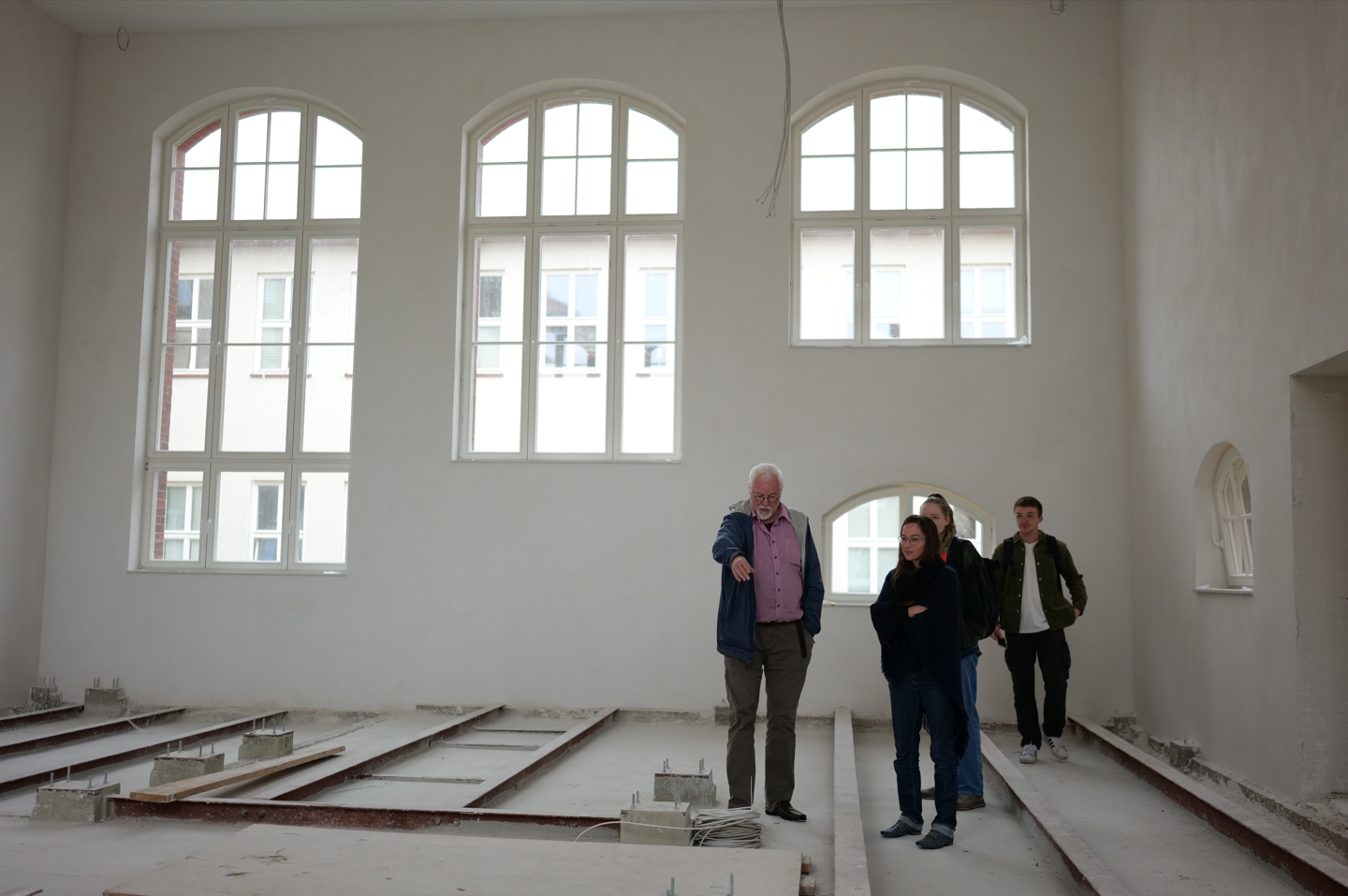
The lecture hall "Old chemistry" of Greifswald University in renovation (Photod: S. Furtak)
by NK
Start for MOOSland
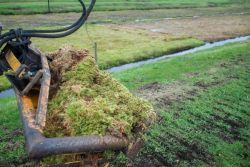
for tiny moss on large scale
11/01/2024 With MOOSland, a small plant is supposed to make a big impact – peat moss. This can be grown as a renewable raw material to replace peat in horticulture with great benefits for the climate and the economy. Over the next ten years, MOOSland wants to implement the cultivation and utilization of peat moss biomass, which has already been researched in pilot projects, on a large scale. When grassland is being rewetted for climate protection reasons, the cultivation of peat moss offers an alternative to current drainage-based agriculture. Peat moss stores water in its cells, up to 30 times its own weight. Thus, it provides a renewable raw material with similar properties to the peat formed from it. It is therefore ideal as a peat substitute. MOOSland will now help to investigate and implement peat moss paludiculture on a large scale in an ecologically, economically and socially compatible way. MOOSland is a model and demonstration project by the University of Greifswald and seven partners from Lower Saxony. The Federal Ministry of Food and Agriculture (BMEL) is supporting the project with a total of around 12.5 million euros from the Climate Transformation Fund (KTF); The project sponsor is the Agency for Renewable Raw Materials (FNR).
by NK
Wet again – but no flooding
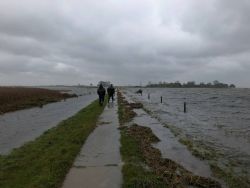
with benefit instead of damage
6/01/2024 It has rained a lot in large parts of Germany in the past few weeks. Many rivers have overflowed their banks, numerous areas are flooded, dikes are giving way and the water is threatening towns and cities. Countless rescue workers and helpers are fighting to limit the damage.
Our use of water is a key reason for the floods: water management today is designed to drain rainwater from the landscape quickly and in a controlled manner. That's why it is crisscrossed with a dense drainage network of ditches, underground drainage pipes, receiving waters, pumping stations, etc. Straightening watercourses also contributes to the water flowing away more quickly. However, when there is high rainfall, this drainage system is overloaded. The water cannot be drained away quickly enough and flooding is the result.
Modeling shows that higher winter precipitation and more heavy rain events are to be expected in the future due to climate change. It therefore becomes even more important to make flood protection safer for the future. Simply thinking about more stable and higher dikes is not enough. Rather, retention areas should be given much greater consideration because they have great importance and great potential for flood protection. Peatlands play a prominent role here. When drained, they can exacerbate flood situations if their peat is degraded and compacted. Wet peatlands, on the other hand, can absorb and store water like a sponge, thus delaying runoff. With a peat formation horizon (so-called acrotelm) in the uppermost decimetres, they are able to “breathe”, so the surface fluctuates depending on the water supply (so-called peat oscillation). Short-term flooding thus does not harm wet peatlands, even if they are used for agricultural purposes in paludiculture. This allows them to buffer flood peaks. This is also why they say “Peatland must be wet!”.
